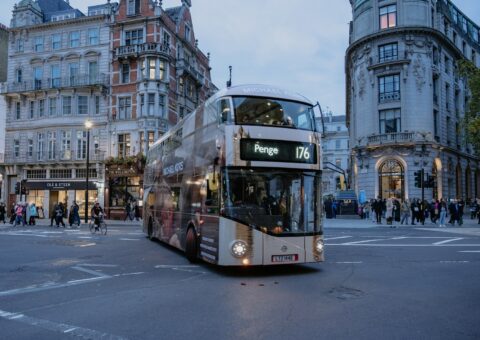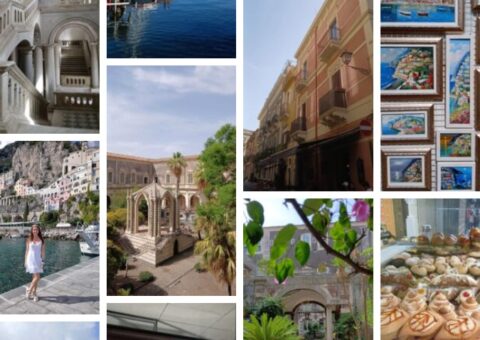Getting Around France’s Capital: Public Transport in Paris
Coming up: fun facts, weird stats, night buses, saving money, surprising apps, unexpected housing hacks, and everything you need to know about public transportation in Paris.
Massive Paris has a population of 11.2 million people, and it’s the fourth-biggest EU city.
So… sorry to break it to you, but you’re probably not gonna walk everywhere.
Which means: you’ll be using public transport.
But how do you buy tickets? How can you save money? Which travel passes are best for you? How many more hypothetical questions are we going to ask? And is there anything else I need to know about public transportation in Paris?
Coming up, your house-finding pals at Homelike have covered it all—here’s everything you need to know about public transportation in Paris!
Public Transportation in Paris: Quick Facts
Paris’ public transport system is made up of:
- Metros: 16 lines and over 300 stations.
- Trains: 5 lines, running from central Paris to the city’s outer regions.
- Trams: 13 lines. Some are in the city, some are on the outskirts, and some run between the two.
- Buses: around 60 different routes in the city, and almost 300 more routes operating in and around the outskirts.
The city is also home to a bike-sharing scheme. Some tourists use it for fun, some locals use it full-time. There are passes ranging from 45 minutes to 3 days. The city’s cycling infrastructure is pretty good, but nothing special.
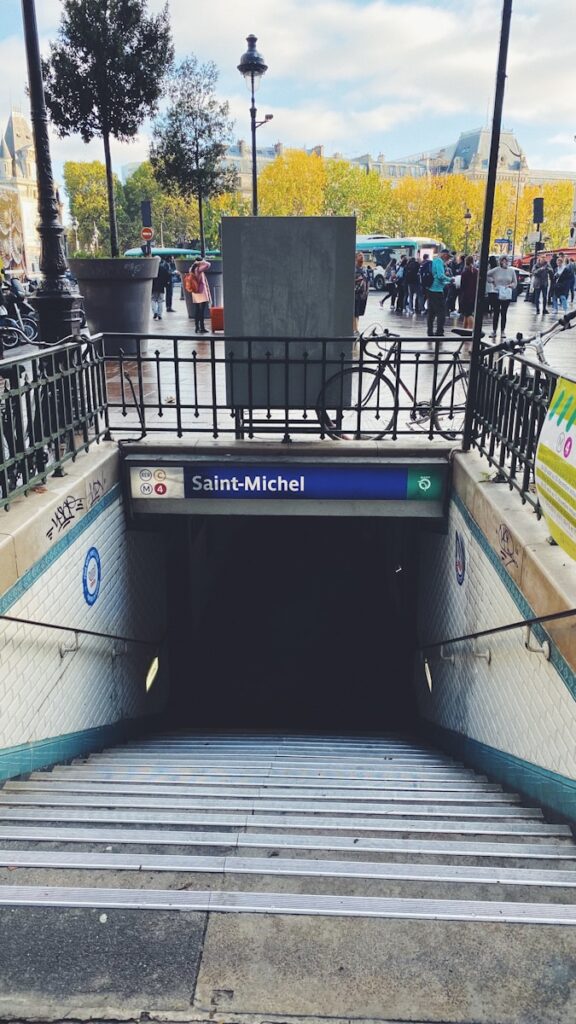
Using the Metro
Paris metro serves around 4 million passengers per day.
Navigating the system is simple—stations are well-signposted, and many signs are in English. You’ll find maps everywhere—in stations, on metros, and on this interactive website. Each line is denoted by a different color.
All metro lines run every day, from around 5:30am to around 1.15am (and on Fridays and Saturdays, it’s around 5:30am until around 2.15am).
Like in any metro system anywhere in the world, the lines are interconnected… so at many stations, you can hop off one line and onto another.
Using buses and trams
The Paris tram map is here. The Paris bus map is here.
Like all public transportation in Paris, the tram system is organized and easy to use: tram interiors have maps, and usually have display boards telling you the two next stations.
Although some trams run centrally, most lie outside the city’s most touristy areas.
Broadly speaking, trams run from around 5:30am to around 0.45am, 7 days a week.
Buses might seem a little trickier to navigate… but both the CityMapper app and the Google Maps app have excellent real-time information. As a nice bonus, some bus stops have maps, and some buses have screens announcing the next two stops.
Although buses run on roads, they only stop at designated stops (unlike in some countries, you can’t just ask the buses to stop anywhere). If you want the driver to stop at the next stop, press the on-board red button.
Buses typically run from around 6:30am to 8:30pm Monday to Saturday. Some of the busier lines stay open until 12:30 am. Outside of these hours, there’s a night bus service—more on that soon!
Important note: only around half the city’s buses run on Sundays—usually to the same schedule as above, but more limited.
Using RER (Regional Trains)
Usually, if you’re moving within the city, you’ll use trams, metros, and buses…
… RER trains are more common for moving between the city and the suburbs.
But: as you can see from the map here, 33 of the 257 RER stations are officially inside the city of Paris. So, from time to time, you might use the RER network to move within the city.
Outside the city, the network is largely overground. Inside the city, it’s largely underground.
Trains and train stations have maps, and the five lines are lettered A to E. On the trains, there are screens and announcements, so it’s easy to know where you are, and where to get off.
Using Night Buses (Noctilien)
For regular night-workers and nightlife-lovers, these are among the most useful public transportation in Paris.
There are 48 Noctilien bus lines, and around 1000 Noctilien stops. They aren’t as extensive as the day buses, but they run to most central areas, and some outskirt areas. They operate between 12:30am and 5:30am, and have signage, electronic boards, and CCTV.
They connect five major transfer hubs (Châtelet, Montparnasse, Gare de l’Est, Gare Saint-Lazare, and Gare de Lyon), and all big nightlife centers (like Champs-Elysées, Bastille, and Pigalle).
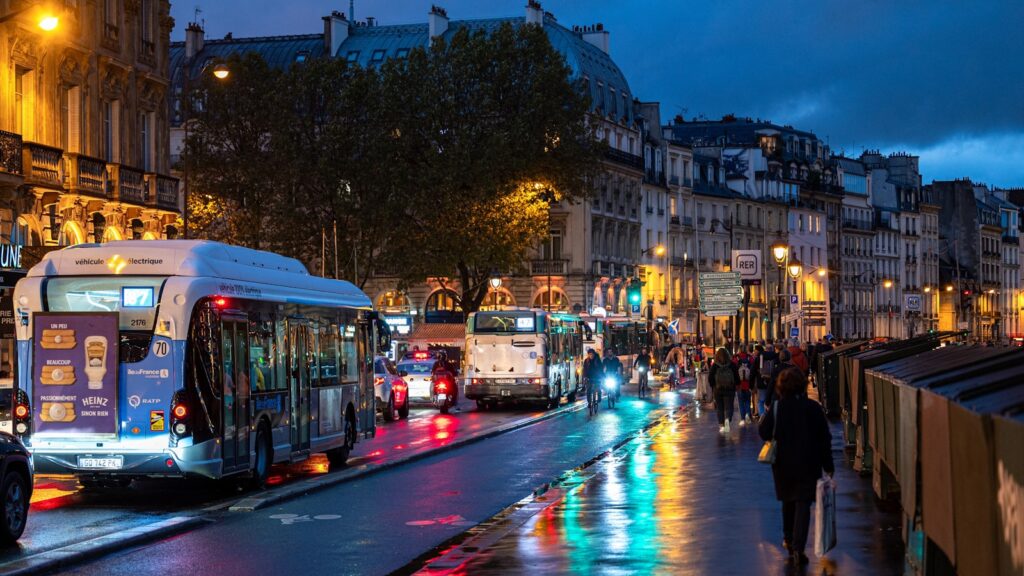
Public Transportation in Paris: Getting to and from Paris Airports
Paris is home to three airports.
Of them, Charles de Gaulle Airport (CDG) and Orly Airport (ORY) are the two most popular.
- Getting to and from Charles de Gaulle Airport (CDG)
You have three main options:
- RER B train: this direct train is very popular. It offers easy access to all 3 airport terminals, and runs to some central Paris stations (including Gare du Nord). The journey takes around 25 minutes, and costs €11.80. Importantly, this is a train, not a metro—make sure you buy the correct ticket. These trains run daily, from around 5am until around midnight, every 15 minutes (including Sundays and public holidays).
- Roissybus: this bus stops at the very-central Opera part of Paris. Tickets cost €16.60, and the journey lasts around 60 minutes. Buses run from around 6am until around 12:30am. They run every 15 to 30 minutes, depending on the time of day (and run on Sundays and public holidays).
- Taxis & ride-sharing: the simplest solution—a taxi has no schedule, you don’t need to check any maps, and you’ll be driven right to your home or hotel. Your taxi will typically cost between €55 and €65. When leaving from the airport, make sure you use official taxi ranks. When leaving for the airport, use the G7 app, or ask your accommodation to organize your ride for you.
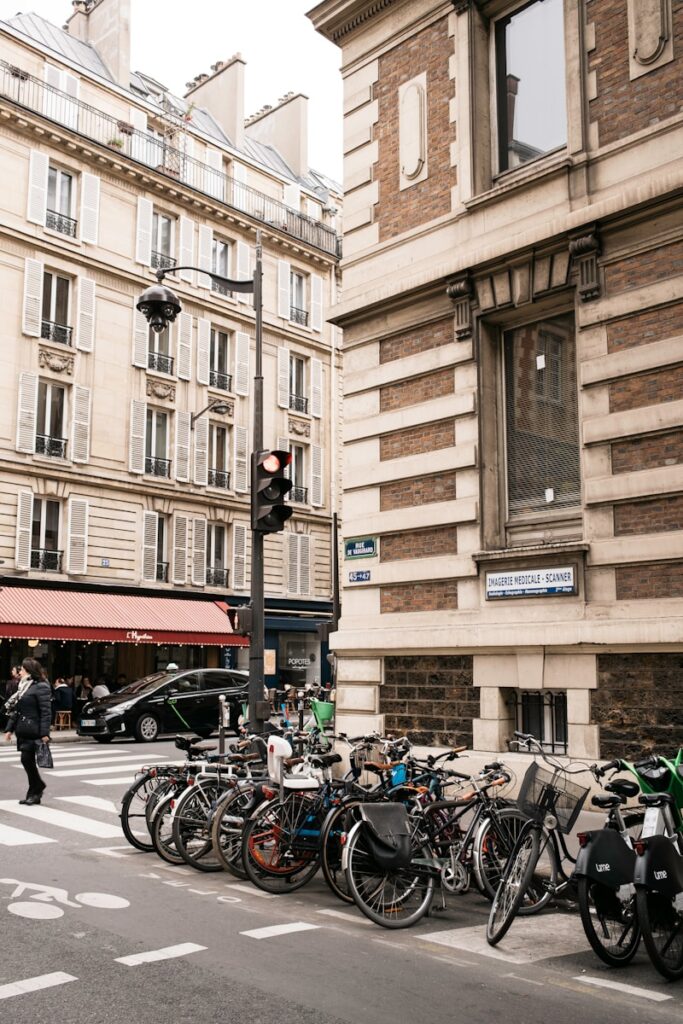
- Getting to and from Orly Airport (ORY)
There are three main ways to buy single-use tickets for public transportation in Paris:
- Ticket machines: all metro stations, all tram stations, all RER stations, and some bus stops and stations have these machines (you can buy bus tickets at all transport machines). If you have cash, you can buy bus tickets directly from bus drivers for €2.50.
- Tabacs: basically just small shops, where you can buy an assorted bunch of basics, like snacks and cigarettes. You’ll see lots of them throughout Paris. Most of them sell transport tickets.
- Station kiosks: some bigger stations have staffed kiosks where you can buy tickets, and get information and advice.
You cannot buy tickets on trams or metros.
At all of the above, you can buy single-use T+ Tickets. These cost €2.15, and you can use one ticket for as many journeys as you want on as many types of transport as you want—but only within 90 minutes of validating the ticket. Essentially, a ‘single-use ticket’ isn’t necessarily just for one journey. Instead, it’s for 90 minutes of travel.
Alternatively, you can instead buy a carnet. This is basically just a collection of ten single-use tickets, and costs €17.35.
At present, you can buy the single tickets as physical actual tickets. But the carnets of 10 tickets can’t be bought as physical tickets. Instead, they are added to Navigo Easy cards, a type of travel pass. More on them (and other passes) next!
How to Purchase Tickets for Public Transportation in Paris
There are three main ways to buy single-use tickets for public transportation in Paris:
- Ticket machines: all metro stations, all tram stations, all RER stations, and some bus stops and stations have these machines (you can buy bus tickets at all transport machines). If you have cash, you can buy bus tickets directly from bus drivers for €2.50.
- Tabacs: basically just small shops, where you can buy an assorted bunch of basics, like snacks and cigarettes. You’ll see lots of them throughout Paris. Most of them sell transport tickets.
- Station kiosks: some bigger stations have staffed kiosks where you can buy tickets, and get information and advice.
You cannot buy tickets on trams or metros.
At all of the above, you can buy single-use T+ Tickets. These cost €2.15, and you can use one ticket for as many journeys as you want on as many types of transport as you want—but only within 90 minutes of validating the ticket. Essentially, a ‘single-use ticket’ isn’t necessarily just for one journey. Instead, it’s for 90 minutes of travel.
Alternatively, you can instead buy a carnet. This is basically just a collection of ten single-use tickets, and costs €17.35.
At present, you can buy the single tickets as physical actual tickets. But the carnets of 10 tickets can’t be bought as physical tickets. Instead, they are added to Navigo Easy cards, a type of travel pass. More on them (and other passes) next!

Navigo Pass: A Tourist’s Best Friend?
For pretty much every frequent or semi-frequent public-transport rider (even if you’re only around for a few days), the Passe Navigo is your best option. Most Paris locals have one.
With this travel pass, you can ride on all forms of inner-city public transportation in Paris.
You can either get a physical pass, or use an app. The app, you download. The physical card, you buy at travel stations.
Whichever you choose, you tap onto whatever type of transport you’re using to validate your journey (all types of transport have card readers). Keep your balance topped up by preloading journeys onto the card. You top it up in stations, at some tabacs, or on the RATP app.
Important note: unlike in many other cities, you can’t use a debit card to tap onto Paris public transport.
There are three popular types of Navigo Pass:
- Navigo Easy
This works just like the Navigo Decouverte (more on that next), except it’s not personalized—so multiple people can use one card. Ideal for tourists, kids, groups of friends, and people who rarely use public transport.
- Navigo Decouverte
This works just like the Navigo Decouverte (more on that next), except it’s not personalized—so multiple people can use one card. Ideal for tourists, kids, groups of friends, and people who rarely use public transport.
- The Navigo Weekly Pass
This isn’t a card of its own, but it’s super popular with tourists. Basically, you get a Navigo Decouverte, then load a weekly pass onto it. You cannot load a weekly pass onto a Navigo Easy card.
Importantly, the weekly pass resets every Sunday. So: you only actually get a full week from your weekly pass if you buy it on a Monday.
Other Pass Options for Tourists
If you’re a tourist, you also have two other options:
- Mobilis Pass
This gives you unlimited single-day travel in selected zones.
If you’ll be traveling within zone 1, your only option is the all-zone ticket, which costs €20.10 per day. Others are cheaper, but obviously not as convenient for everyone.
Note: you cannot load your Mobilis Pass onto your Navigo card.
- Paris Visite Pass
The Paris Visite Pass is specifically built for tourists.
It allows unlimited travel on all modes of transport for 1, 2, 3 or 5 consecutive days. Different packages come with different price plans.
A five-day adult ticket for zones 1-3, for example, costs €44.45.
But here’s the big perk: the Paris Visite Pass comes with discounts on attractions, food, and more. These discounts (and where the discounts are offered!) regularly change… so ask for specifics before you buy a pass.
How to Validate Tickets and Passes for Public Transportation in Paris
Here’s how to actually use your tickets:
- Ticket validation: when you use a Metro or an RER, you tap on the card reader at the station (before you get on the vehicle). With trams and buses, you tap on after entering the vehicle. You don’t tap off for any forms of transport, except the RER. If you’re using paper tickets, you can validate these in the same way—but don’t throw paper tickets away until after your journey is completely finished.
- Navigo Pass: with your Navigo pass, you tap on as described above. Again, you don’t need to tap off. To add journeys to your pass, you can use station machines, or the RATP app. Some tabacs can also help you.
- Fines: if you don’t have a valid card or a valid pass (and haven’t tapped on for your journey), you could be fined. On the public transportation in Paris, fines vary… but can go up to €180.
Public Transportation in Paris: Accessibility & Practical Tips
Some top tips for using public transportation in Paris:
- Accessibility: all buses in central Paris are accessible and wheelchair-friendly. Similarly, all trams and RER trains are accessible (if you plan to take a train, reserve an accessible space in advance, to make sure there’s space for you, and staff to help you). The metro is not so accessible—line 14 is completely accessible, but most other trains and stations across the network are not.
- Recommended apps:
- RATP: the official Paris public-transport app, this is great for topping up your travel passes, getting real-time info, and using taxis and sharebikes.
- CityMapper: the world’s best app for detailed travel information. It’s like Google Maps, except the cycling info is much better, and it offers handy details… like which platforms to stand on, and which entrances and exits to use.
- Google Maps: doesn’t offer the same perks as the above two, but everyone knows how to use it. It offers real-time information, in an easy-to-understand format.
- G7: for booking taxis.
- If you want to dodge crowds, avoid busy periods. They are from 8am until 10am, and from 5pm until 8pm.
- On the public transportation in Paris, you’ll find many pickpockets. Keep your belongings in tight front pockets or zipped bags, so you always know where they are.
- Beware of fake ticket inspectors trying an occasional scam: someone comes on the public transportation in Paris, tells you that your ticket is invalid, then gives you a fine. So, if an inspector tries to fine you, always ask for official ID.
Where to Stay in Paris
Top tip: if you stay in a central neighborhood (or in a neighborhood close to where you’ll be working or spending most of your time), you won’t need to do so much traveling.
For help on that: our guide to the best neighborhoods in Paris.
But, a common question: once you’ve chosen a neighborhood, how do you find a nice place to live?
Well, if you’re only around for a few days, you’ll probably use Booking or Kayak.
But… if you’re around for a month or more (for work, or long-term tourism, or because you’re moving to Paris), things are a little trickier. For longer stays, you have lots of competition—local people speak French, have local contacts, and understand Parisian bureaucracy.
So if you struggle to find a place, do what many others do: move into one of our short term rentals in Paris!
They’re ready today, they’re fully-furnished, and all utilities (including internet) are already organized for you. And best of all, we have homes in all the city’s central districts (so you don’t need to spend too much time on public transportation in Paris!)
Public Transportation in Paris: Final Thoughts
That’s everything you need to know about public transportation in Paris!
As you’ve probably realized by now, it’s all simple and easy to use. All types of transport are regular and well-connected, there are lots of great apps, and you’ll always find helpful maps (and helpful people!).
… and if you stay in one of our central homes, you won’t need to navigate public transport too often!
Thanks for reading, thanks for choosing Homelike, and enjoy Paris. Bye for now!




